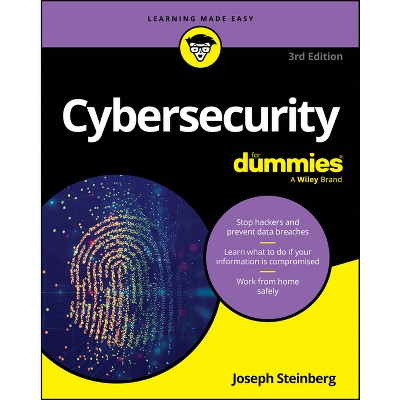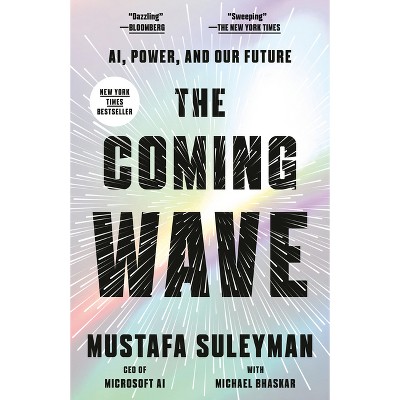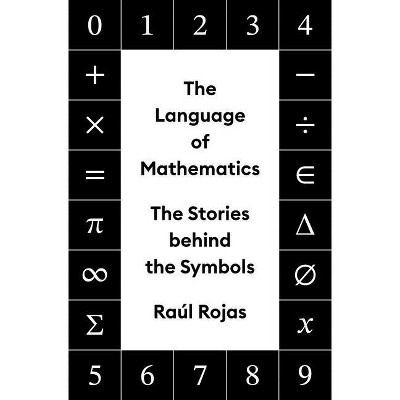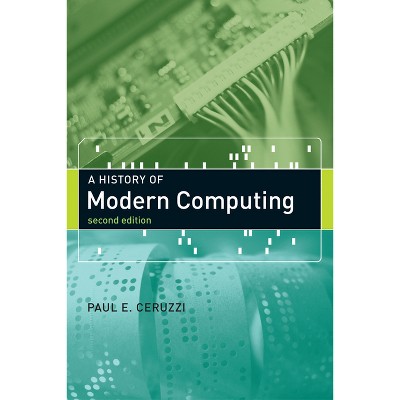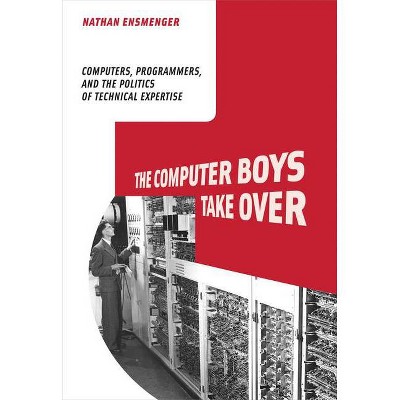About this item
Highlights
- This book describes the historical development of the architectures of the first computers built by the German inventor Konrad Zuse in Berlin between 1936 and 1945.
- About the Author: Raul Rojas is Professor of Mathematics and Statistics at the University of Nevada, Reno.
- 229 Pages
- Computers + Internet, History
- Series Name: History of Computing
Description
Book Synopsis
This book describes the historical development of the architectures of the first computers built by the German inventor Konrad Zuse in Berlin between 1936 and 1945. Zuse's machines are historically important because they anticipated many features of modern computers.
Specifically, these include the separation of processor and memory, the ability to compute with floating-point numbers, a hardware architecture based on microprogramming of the instruction set, and a layered design with a high-level programming language on top. In fact, Zuse's early computers are closer to modern computers than the Harvard Mark I or ENIAC, two other contenders for the title of "world's first computer." The theoretical program first conceived by Zuse in 1936/37 was fulfilled with a series of machines built before and during World War II: the Z1, Z2, Z3, and Z4. Separate chapters deal with the architecture of each computer, culminating in the description of Plankalkül, the first proposal for a high-level programming language.Students of the sciences and practitioners of computer science should have no trouble following the material. The concise introductory summary sets the reader on the historical path to retrace this remarkable intellectual adventure.
From the Back Cover
This book describes the historical development of the architectures of the first computers built by the German inventor Konrad Zuse in Berlin between 1936 and 1945. Zuse's machines are historically important because they anticipated many features of modern computers.Specifically, these include the separation of processor and memory, the ability to compute with floating-point numbers, a hardware architecture based on microprogramming of the instruction set, and a layered design with a high-level programming language on top. In fact, Zuse's early computers are closer to modern computers than the Harvard Mark I or ENIAC, two other contenders for the title of "world's first computer." The theoretical program first conceived by Zuse in 1936/37 was fulfilled with a series of machines built before and during World War II: the Z1, Z2, Z3, and Z4. Separate chapters deal with the architecture of each computer, culminating in the description of Plankalkül, the first proposal for a high-level programming language.Students of the sciences and practitioners of computer science should have no trouble following the material. The concise introductory summary sets the reader on the historical path to retrace this remarkable intellectual adventure.Raul Rojas is Professor of Mathematics and Statistics at the University of Nevada, Reno, US. He is also Professor Emeritus at Freie Universität Berlin. He has published two books on neural networks with Springer-Verlag, as well as the book "Die Rechenmaschinen von Konrad Zuse,"a volume that finds its continuation in this new book. Prof. Rojas was named Professor of the Year in Germany in 2014.
Review Quotes
"This book explicitly aims to pay tribute to Zuse's wide-ranging merits. ... All chapters (some translated from German) are meant to be read as stand-alone pieces, tied together by an instructive preface. The book is intended to address 'curious and adventurous' students and practitioners of computer sciences, yet it can also inspire readers from historical disciplines. Compiling thirty years of research, however, this book documents Rojas's remarkable, long-lasting efforts to keep the memory of Zuse alive." (Michael Homberg, Technology and Culture, Vol. 66 (1), January, 2025)
About the Author
Raul Rojas is Professor of Mathematics and Statistics at the University of Nevada, Reno. He was Professor of Artificial Intelligence at the Freie Universität Berlin from 1997 to 2020. Previously, he held professorships at the Martin Luther University Halle-Wittenberg and the Technical University of Vienna. Raul Rojas' field of research is the theory and applications of artificial intelligence algorithms. He has published two books on neural networks with Springer-Verlag, as well as the book "Die Rechenmaschinen von Konrad Zuse" (1998), a volume that finds its continuation in this new book. Prof. Rojas is a member of the Mexican Academy of Sciences, received the National Science Prize of Mexico in 2015, and was named Professor of the Year in Germany in 2014.
Shipping details
Return details
Trending Computers & Technology Books




